The Ultimate Food Dehydrator Guide For Beginner’s
- April 1, 2024
- 0 comment
The Ultimate Food Dehydrator Guide is an age-old technique modernized by technology to preserve food effectively. From the sun’s natural rays to sophisticated electric dehydrators, the art of drying food has evolved, offering various methods to suit every need.
Why Dehydrate?
Dehydrating food offers a multitude of benefits that cater to both practical needs and personal preferences. By removing moisture, dehydration significantly extends the shelf life of foods, allowing seasonal fruits and vegetables to be preserved and enjoyed year-round. This process not only ensures a steady supply of nutrients but also minimizes food waste by providing an effective way to handle surplus produce from home gardens or market deals. Additionally, dehydrated foods are known for their convenience; they are lightweight and compact, making them perfect for storage and ideal for outdoor activities like camping and hiking where portability is key. The process also tends to concentrate the flavors of foods, making dried fruits a sweeter, healthier alternative to processed snacks.
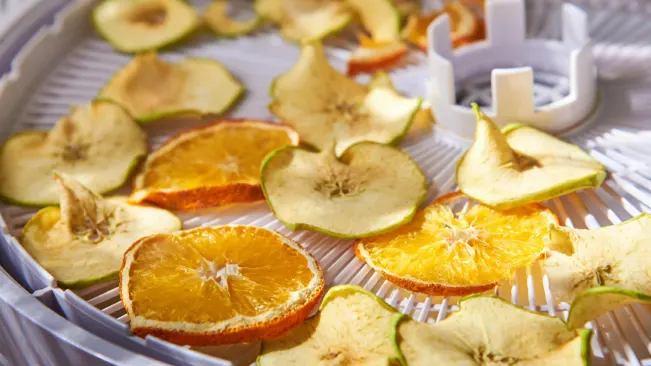
Beyond the practicalities, dehydrating foods is a cost-effective and energy-efficient preservation method, avoiding the ongoing costs associated with freezing. It aligns with various dietary needs, allowing those on raw food diets to enjoy preserved foods without exceeding temperature thresholds. Home dehydration offers unparalleled customization, letting you dictate the dryness, thickness, and seasoning of your foods to suit your tastes. Moreover, in emergency situations where fresh food might not be accessible, having a stock of dehydrated foods can be a lifesaver, providing a lightweight, non-perishable, and nutritious food source when you need it most.
How Do Food Dehydrators Work?
Heat Generation

The dehydration process starts with the crucial step of generating heat, which is essential for warming the food to evaporate its water content. This heat is typically produced by an electric heating element located within the dehydrator. The temperature control is a delicate balance, set to be high enough to efficiently evaporate water from the food but low enough to avoid cooking or damaging it. This careful temperature regulation ensures that the food retains its vital nutrients and enzymes, which are often sensitive to heat. The goal is to achieve effective dehydration while preserving the food’s nutritional integrity and flavor, making the heat generation component of a dehydrator a pivotal aspect of its functionality.
Air Flow
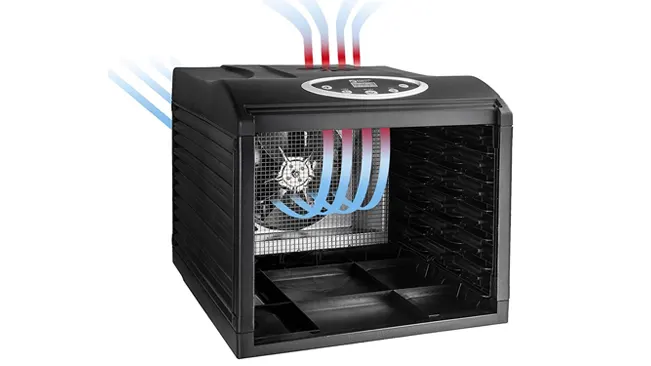
In tandem with heat, air flow plays a critical role in the dehydration process. A dehydrator’s air flow system, often driven by a built-in fan, circulates warm air across and around the food placed inside. This circulation fulfills two key functions. Firstly, it ensures a uniform distribution of heat across all areas, preventing uneven drying where some parts might dry out faster than others. Secondly, it facilitates the removal of moisture-laden air from the vicinity of the food. This continuous flow of warm, dry air not only promotes consistent drying but also helps to maintain an environment within the dehydrator that is conducive to effective moisture removal, contributing significantly to the efficiency of the dehydration process.
Trays or Racks
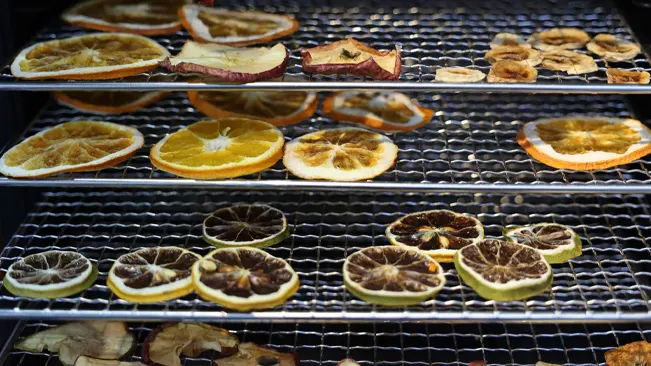
The physical structure within which the food is dehydrated plays a significant role in the efficiency of the process. Food dehydrators are equipped with trays or racks designed to hold the food in an optimal arrangement for drying. These trays are engineered to maximize the exposure of the food’s surface area to the circulating warm air, enhancing the removal of moisture. The design of the trays ensures that food items are spaced out evenly, preventing overlap that could lead to uneven drying. This spatial arrangement is crucial for achieving consistent drying across all pieces of food, contributing to the overall effectiveness of the dehydration process. The trays or racks not only serve as the platform for the food but also as a key component in the efficient operation of the dehydrator.
Types of Dehydrators
Solar Dehydrators
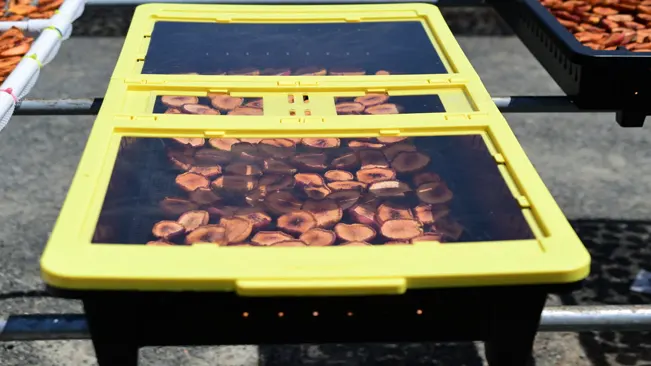
Solar dehydrators harness the natural power of the sun to dry food, making them an eco-friendly and energy-efficient option. These dehydrators typically consist of a box or cabinet with clear panels that allow sunlight to enter and heat the interior. Inside, trays or racks hold the food to be dried. The design often includes vents or openings to facilitate air circulation, driven by the natural rise of warm air, which helps to carry away the moisture evaporated from the food. Solar dehydrators can be highly effective, especially in sunny climates, but their performance is heavily dependent on weather conditions. They are a great choice for those looking to reduce energy consumption and for use in off-grid settings, though they require more attention to timing and conditions compared to other types.
Oven Dehydrators
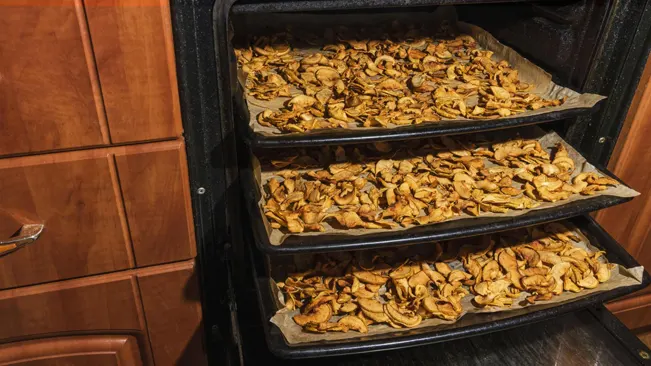
Using a conventional kitchen oven as a dehydrator is a practical option for many, especially if they don’t want to invest in a dedicated dehydrator. To dehydrate food in an oven, one typically sets it at the lowest temperature, places the food on wire racks for optimal air circulation, and leaves the oven door slightly ajar to allow moisture to escape. This method can be more energy-intensive and less efficient than using a purpose-built dehydrator, as ovens are designed for cooking rather than drying. However, for occasional use or for those just starting with dehydration, it can be a convenient and accessible method without the need for additional equipment.
Electric Dehydrators
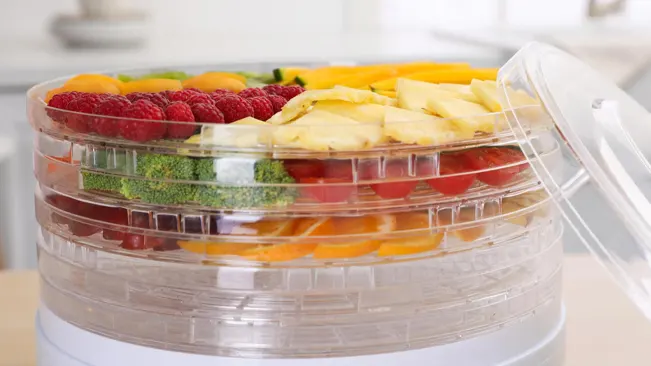
Electric dehydrators are specifically designed for drying food and are the most commonly used type. They are equipped with a built-in heat source and fan for consistent and controlled air flow and temperature. These dehydrators come in various sizes and configurations, from small, simple models suitable for occasional use to larger, more complex units with multiple trays and temperature settings for serious enthusiasts. Electric dehydrators provide a reliable and efficient way to dry a wide range of foods, including fruits, vegetables, meats, and herbs. They offer the convenience of setting a temperature and letting the device do the work, usually with more consistent results and less energy consumption than oven dehydration. Their controlled environment also allows for drying food any time of the year, regardless of outdoor weather conditions.
Prepping for Dehydration
Food Selection and Preparation
- Quality Matters: Start with fresh, high-quality produce or meats. The dehydration process concentrates flavors, so any imperfections in the fresh food can become more pronounced in the dried version.
- Wash and Clean: Thoroughly wash fruits and vegetables to remove any dirt, pesticides, or residues. For meats, ensure they are fresh and have been handled and stored correctly before dehydration.
- Consistent Sizing: Cut the food into even, uniform pieces to ensure consistent drying. Large pieces can take significantly longer to dry, and uneven sizes can lead to some pieces being over-dried while others are still moist.
- Blanching: Some vegetables benefit from blanching before dehydration, as it can stop enzymatic reactions that may cause spoilage, help preserve color, and shorten drying times.
- Pre-treatments: Certain fruits may require pretreatment, such as dipping in lemon juice or ascorbic acid solution, to prevent browning and to preserve color and vitamin content during drying.
Handling and Safety
- Hygiene: Always start with clean hands, utensils, and surfaces. This minimizes the risk of introducing bacteria or other pathogens to the food that will be dehydrated.
- Temperature Control: When dehydrating meats or making jerky, it’s crucial to heat the meat to a safe temperature that kills any harmful bacteria before beginning the dehydration process. Following recommended temperature guidelines is essential for safety.
- Moisture Check: Ensure that the food is adequately dried before storage. Any residual moisture can lead to mold or bacterial growth. Foods should be dry to the touch and, in the case of fruits, pliable without being sticky. Meats should be tough and leathery.
- Safe Storage: Store dehydrated foods in airtight containers in a cool, dark place to maximize shelf life. Vacuum sealing and the use of oxygen absorbers can further extend the life of dried foods.
- Regular Checks: Regularly check stored dehydrated foods for signs of spoilage, such as mold or off smells. Properly dried and stored foods have a long shelf life, but it’s always best to err on the side of caution and inspect your food before consumption.
The Dehydration Process: A Step-by-Step Guide
Step1: Selection and Preparation
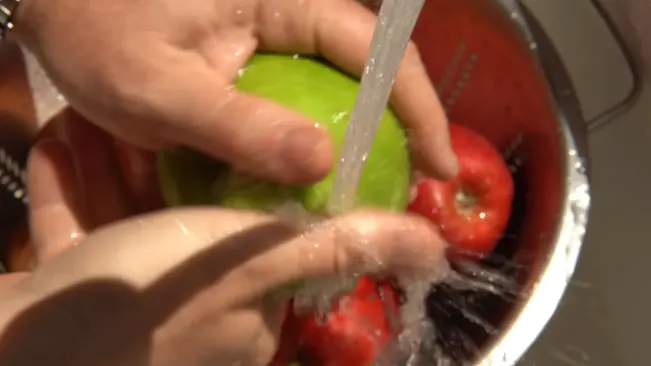
Choosing fresh and high-quality ingredients is the first critical step in the dehydration process. For fruits and vegetables, select those that are ripe, free from bruises, and vibrant in color, which indicates peak nutritional value and flavor. Washing them thoroughly under running water helps remove any surface dirt, chemicals, or pesticides. When it comes to meats, freshness is paramount. Select cuts that are fresh and have been refrigerated or frozen properly. This not only ensures safety but also affects the quality and taste of the dehydrated product.
Step2: Slicing and Cutting
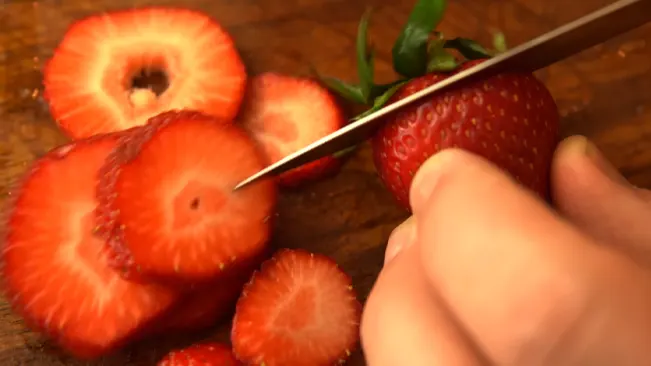
Uniformity in slicing and cutting is crucial for even dehydration. Use a sharp knife or a mandoline slicer to achieve consistent thickness, aiming for slices or pieces that are no more than ¼ inch thick. This uniformity ensures that all pieces dry at approximately the same rate, preventing the need for some pieces to be removed from the dehydrator prematurely while others need more time.
Step3: Pre-treatments
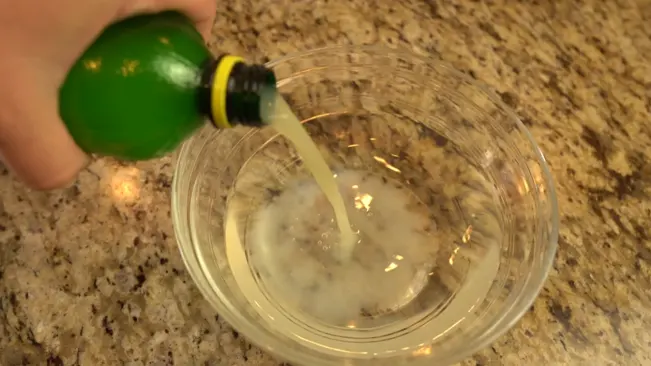
Pre-treating certain foods can significantly enhance the final product in terms of color, flavor, and safety. Blanching vegetables by briefly immersing them in boiling water and then plunging them into ice water stops enzymatic reactions that could cause off-flavors or spoilage during storage. Fruits prone to oxidation, like apples and bananas, can be soaked in a lemon juice or ascorbic acid solution to preserve their color and prevent browning, enhancing their appearance and appeal in the dried state.
Step4: Arranging on Trays
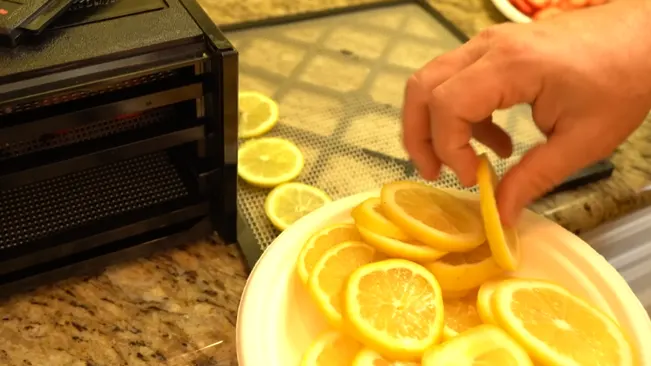
Proper arrangement on the dehydrator trays is essential for effective airflow and drying. Place the slices or pieces in a single layer, ensuring they do not touch or overlap. This spacing allows warm air to circulate freely around each piece, promoting uniform drying and preventing any wet spots that could lead to spoilage.
Step5: Setting the Temperature
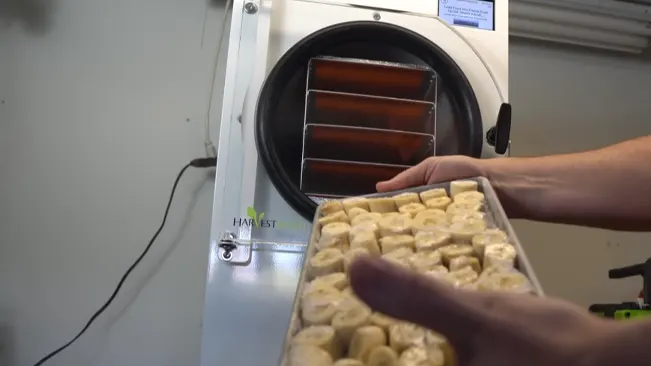
Adjusting the dehydrator to the right temperature is vital for optimal drying. The ideal temperature range for fruits and vegetables is between 125-135°F (52-57°C), which is high enough to evaporate moisture quickly but low enough to preserve enzymes and nutrients. Meats and fish require higher temperatures—around 160°F (71°C) for meats and 145°F (63°C) for fish—to ensure any harmful bacteria are killed, making the dried product safe to consume.
Step6: Dehydration Time

The time it takes to dehydrate food can vary widely depending on several factors, including the moisture content of the food, the thickness of the slices, and the efficiency of the dehydrator. It’s important to regularly check the progress of the drying food, understanding that while some items may be ready in just a few hours, others may take up to a day or more to fully dry.
Step7: Testing for Dryness
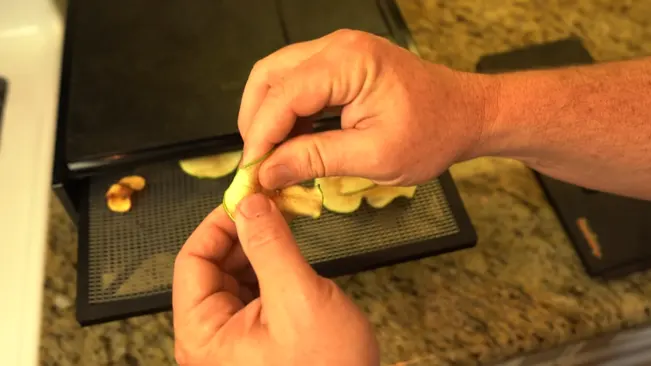
Determining when food is sufficiently dried is key to its preservation. Fruits should be pliable but not sticky, indicating that most of the moisture has been removed but they are not over-dried. Vegetables should be brittle or crisp, and meats should be tough and leathery without any sign of moisture when cut open. Letting a sample piece cool can provide a more accurate assessment of its dryness.
Step8: Cooling Down
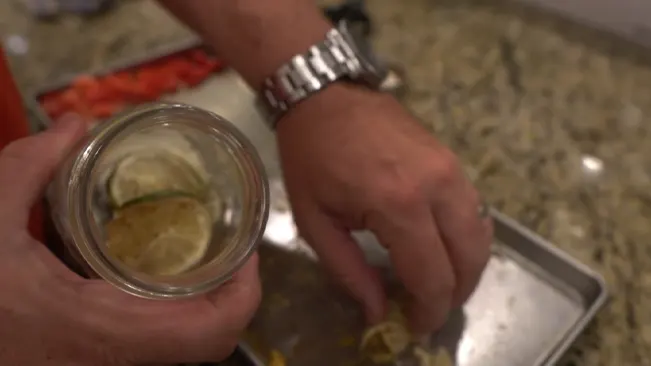
After the dehydration process is complete, it’s important to let the food cool to room temperature before packaging. This cooling period helps to stabilize the food and prevents condensation that could reintroduce moisture when the food is placed in storage containers, potentially leading to spoilage.
Step9: Storage
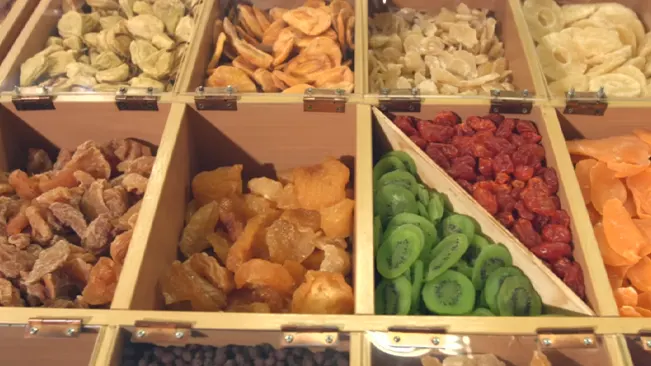
Storing dehydrated foods properly is crucial for maintaining their quality and extending shelf life. Use airtight containers, such as glass jars, vacuum-sealed bags, or Mylar bags with oxygen absorbers, to protect the food from moisture and air. Store these containers in a cool, dark place like a pantry or cupboard to prevent exposure to light and heat, which can degrade the quality of the dehydrated food over time.
Dehydrating Different Foods
Fruits
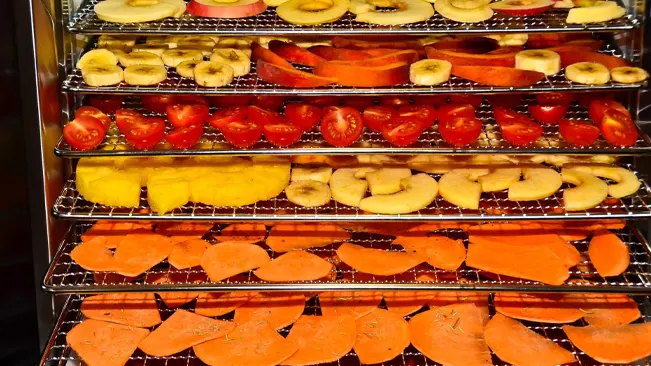
Fruits are popular for dehydration due to their natural sweetness and snack-friendly texture post-drying. Thin, uniform slices ensure even drying. Fruits with high water content, like watermelon or citrus, will take longer to dry. Pre-treating fruits by dipping them in a lemon juice or ascorbic acid solution can prevent browning and preserve their vibrant colors. Commonly dehydrated fruits include apples, bananas, berries, and mangoes.
Vegetables

Vegetables often require blanching before dehydration to stop enzymatic activity that could spoil the food. Cut vegetables into uniform pieces or slices for consistent drying. Leafy greens do not require blanching and can be dried as whole leaves or chopped. Dried vegetables are great for soups, stews, or snacking. Popular choices include tomatoes, bell peppers, zucchini, and carrots.
Meats

Dehydrating meat, often referred to as making jerky, requires careful attention to food safety. Meats should be lean, as fat does not dehydrate well and can go rancid. Slice meat thinly against the grain for tender jerky. Marinating meat can add flavor but should be done safely in the refrigerator. Meats need to be dehydrated at higher temperatures (at least 160°F or 71°C) to ensure any harmful bacteria are destroyed.
Common Mistakes to Avoid
1. Overcrowding the Dehydrator Trays: Placing too many items on the dehydrator trays or allowing them to overlap can obstruct airflow and lead to uneven drying. This can result in some pieces being over-dried while others remain moist, potentially leading to spoilage.
2. Inconsistent Slice Thickness: Failing to slice foods uniformly can cause pieces to dry at different rates. Thin slices may become too dry or even burn, while thicker ones may not dry sufficiently, posing a risk for microbial growth.
3. Skipping the Pre-treatment Step: Neglecting pre-treatment processes like blanching for vegetables or acid treatments for fruits can affect the color, texture, and shelf life of dehydrated foods. Pre-treatment can also be critical for safety, especially in the case of meats.
4. Dehydrating Different Foods Together: Different foods have varying drying times and temperatures, and some may release strong odors or flavors that can be absorbed by other foods in the dehydrator. It’s best to dehydrate similar foods together to avoid cross-contamination of flavors and ensure even drying.
5. Using Too High or Too Low Temperatures: Setting the dehydrator temperature too high in an attempt to speed up the process can lead to ‘case hardening,’ where the outside of the food dries quickly, trapping moisture inside. Conversely, temperatures that are too low may not adequately prevent microbial growth. It’s essential to use the recommended temperatures for each type of food.
6. Not Testing for Doneness Properly: Determining when food is adequately dried can be tricky. Testing for doneness by touch alone can be misleading, as some foods may feel more pliable when warm. Allowing the food to cool before testing can give a more accurate assessment.
7. Improper Storage: Storing dehydrated foods in containers that are not airtight or in a humid environment can reintroduce moisture, leading to spoilage. Using vacuum-sealed containers and including desiccants for moisture control can help maintain the quality of dried foods.
8. Neglecting Dehydrator Maintenance: Failing to clean and maintain the dehydrator can lead to the buildup of food particles and odors, which can affect the flavor of subsequent batches and potentially harbor bacteria. Regular cleaning and maintenance are crucial for optimal performance and food safety.
Conclusion
In conclusion, food dehydration is a valuable skill for preserving food, enhancing flavors, and creating healthy snacks. By carefully selecting and preparing items, using appropriate techniques, and adhering to storage best practices, you can achieve excellent dehydration results. Avoiding common errors like tray overcrowding and improper temperature settings is crucial for maintaining food quality and safety. Success in dehydration, whether you’re experienced or just starting out, requires patience, attention to detail, and a readiness to learn and adapt. Embracing these principles makes food dehydration a fulfilling activity that supports a sustainable lifestyle.
FAQs
- What foods can be dehydrated?
Almost any food can be dehydrated, including fruits, vegetables, meats, herbs, and even some dairy products like cheese. The key is to understand the specific preparation and dehydration requirements for each type of food. - How long do dehydrated foods last?
The shelf life of dehydrated foods can vary widely based on the food type, dehydration method, and storage conditions. Properly dried and stored foods can last from several months to a few years. - Can I dehydrate different foods at the same time?
It’s possible, but not always recommended. Different foods may have varying drying times and temperatures, and flavors might transfer between foods. It’s best to dehydrate similar foods together. - Do I need to pre-treat all foods before dehydrating?
Not all foods require pre-treatment, but some benefit from it for color preservation, flavor enhancement, or safety. Blanching vegetables and pretreating fruits with lemon juice or ascorbic acid are common practices. - Is a food dehydrator necessary, or can I use my oven?
While a food dehydrator is specifically designed for this purpose and can provide more consistent results, an oven can be used for dehydration as well. However, it may be less energy-efficient and require more attention to ensure even drying. - How do I know when the food is completely dehydrated?
This depends on the type of food. Fruits should be pliable but not sticky, vegetables should be crisp or brittle, and meats should be tough and leathery. Cooling a small sample before testing can give a more accurate assessment. - Can dehydrated food be rehydrated?
Yes, most dehydrated foods can be rehydrated by soaking in water or cooking them in liquid. The rehydration time will depend on the food and the size of the pieces. - What is the best way to store dehydrated foods?
Dehydrated foods should be stored in airtight containers in a cool, dark place. Vacuum sealing and using oxygen absorbers can extend shelf life even further. - Are there any health risks associated with dehydrated foods?
If dehydrated properly and stored in the right conditions, there are no inherent health risks. However, it’s crucial to dehydrate meats and seafood at the correct temperatures to ensure safety. - Can dehydrating food reduce its nutritional value?
The dehydration process can cause some loss of vitamins sensitive to heat and air exposure, but most minerals and fiber content remain intact. Overall, dehydrated foods retain a significant portion of their nutritional value.

Joel Cunningham
Forestry AuthorI'm Joel Cunningham, an expert in pruning and weed management with over a decade of experience. My skills are rooted in formal training and extensive practice, focusing on advanced pruning techniques and efficient weed control. I'm known for my quality work, precision, and deep understanding of plant health and soil dynamics. My contributions extend to educational initiatives where I share sustainable practices and advice, establishing myself as a reliable and authoritative figure in the gardening community.









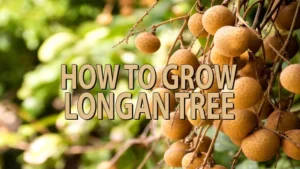


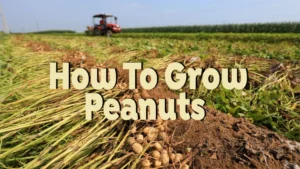
Leave your comment